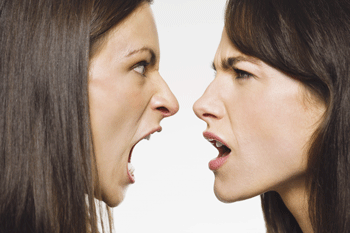 I don’t know about you, but I find our national politics more confusing than ever. We tend to pigeonhole people by what we think they believe and by their political registrations, but in reality, human beings and our politics are much more nuanced. The venerable Pew Research Center, which bills itself as “a non-partisan fact tank that informs the public about the issues, trends, and attitudes shaping the world,” has come up with 9 political categories to describe Americans in 2021.
I don’t know about you, but I find our national politics more confusing than ever. We tend to pigeonhole people by what we think they believe and by their political registrations, but in reality, human beings and our politics are much more nuanced. The venerable Pew Research Center, which bills itself as “a non-partisan fact tank that informs the public about the issues, trends, and attitudes shaping the world,” has come up with 9 political categories to describe Americans in 2021.
These classifications range from “Solid Liberals” on the left to “Core Conservatives” on the right with lots of diversity in between, including “Disaffected Democrats,” “Market Skeptic Republicans,” “Devout and Diverse,” and not surprisingly, “Bystanders.” Both ends of the spectrum, liberals and conservatives, are mostly white, even though the diverse progressive wing of the Democratic Party gets the most press. Liberals are the most educated of the nine groups, while conservatives are the whitest.
In between, the lines are more blurred. Minority Americans tend to be less liberal than the solid liberals, favoring border security and skeptical about free trade. They are also religious and worry about crime. They reject the racism of the far right. The same can be said of working-class Americans of all races and backgrounds. Hence, devout and diverse category. The Pew Research Center, with all its polls, research and analysis, is saying what we all know in our hearts — that most Americans are moderate, caring people who want only good for our nation and for each other. The screaming, name-calling, and — yes, violent behavior, comes from the extremes of each end of the spectrum, not the broad middle.
The recent mayoral contest in New York City has rocketed ranked choice voting to the national consciousness. Ranked choice voting is new-ish, having been used by overseas voters in some states for federal elections. It is also used in non-governmental elections, including student government and Academy Award elections. It is gaining increasing acceptance for city and state contests, largely in the western part of the United States.
There are various versions of RCV, and all involve marking a first-choice candidate and then ranking others. Gradually, some candidates fall away, and someone eventually prevails. North Carolina experimented with the system in 2010 in elections for Superior Court and Court of Appeals judges. The Republican controlled General Assembly repealed RCV in 2013 as part of a sweeping Voter ID bill, later struck down by the courts.
While RCV would be a learning curve for most of us, it makes sense. In today’s highly contested elections with prolonged recounts and charges of fraud, RCV would ultimately result in an elected official most voters selected, if not first, then somewhere down the line and would go a long way toward eliminating elections with crowing winners and bitter losers and their like-minded supporters.
As we emerge from pandemic restrictions, it is clear that people are ready to return to “normal life,” whatever that means to each of us. It is also clear that our COVID year-plus has changed some things forever. Some of us will continue to work remotely. We will likely continue to meet via Zoom or something like it both professionally and in our personal lives. Restaurants may be less sit-down and more casual. And, after months in yoga pants and sweats, relaxed dressing seems here to stay, making business casual the new everyday norm.
It all makes me wonder what about pre-pandemic life I really do want to bring back…